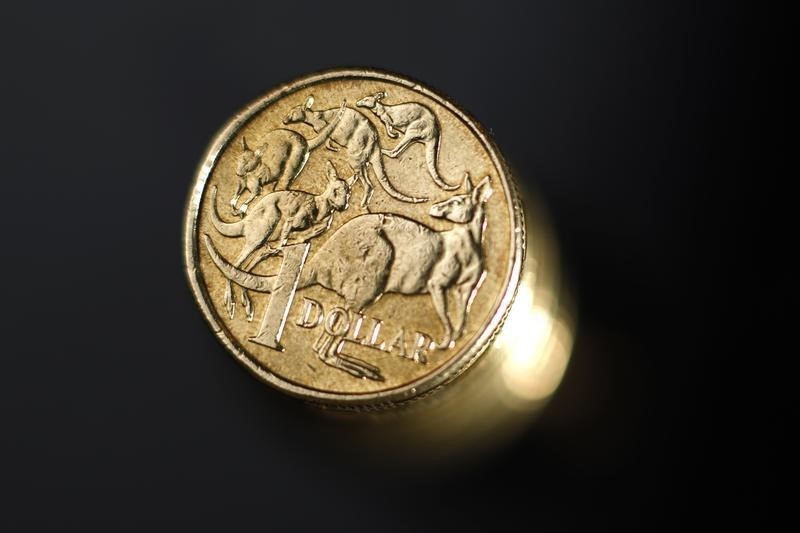Investing.com - The Australian dollar shrugged off better than expected jobs data as an easing in Singapore rattled Asian currencies on growth concerns.
AUD/USD traded at 0.7647, down 0.08%, while USD/JPY changed hands at 109.38, up 0.04%, with remarks by Bank of Japan Governor Haruhiko Kuroda noted. The Monetary Authority of Singapore on Thursday said it would adopt a neutral currency stance against a basket of currencies, a step back from an appreciation view after it said the regional economic picture had dimmed.
In Asia, Australia kicks off with MI inflation expectations whic stood at 3.6%.
The employment change for March saw 26,100 jobs added, above the 20,000 gain seen and the unemployment rate fell to 5.7% from 5.9% expected and down from from 5.8% previously.
The U.S. dollar index, which measures the greenback’s strength against a trade-weighted basket of six major currencies, was last quoted at 94.96, up 0.16%.
Overnight, the dollar rose to one-week highs against the other major currencies on Wednesday, despite the release of disappointing U.S. economic reports, as the greenback continued to recover from sharp losses posted earlier in the week. The U.S. Census Bureau said that retail sales fell by 0.3% in March, disappointing expectations for an uptick of 0.1% and after a 0.1% fall the previous month.
Core retail sales, which exclude automobiles, rose by 0.2% last month, compared to expectations for a 0.4% gain, after a 0.1% slip in February.
A separate report showed that the U.S. producer price index fell by 0.1% in March, confounding expectations for an increase of 0.2% and after a 0.2% decline the previous month. Year-on-year, producer prices slipped 0.1% last month, compared to expectations for a 0.3% gain.
Core PPI, which excludes food and energy, slipped 0.1% last month, disappointing expectations for a 0.1% uptick and following a flat reading in February.
The dollar rebounded earlier Wednesday from sharp losses posted since recent dovish comments by Federal Reserve Chair Janet Yellen prompted investors to push back expectations on the timing of the next interest rate increase.
